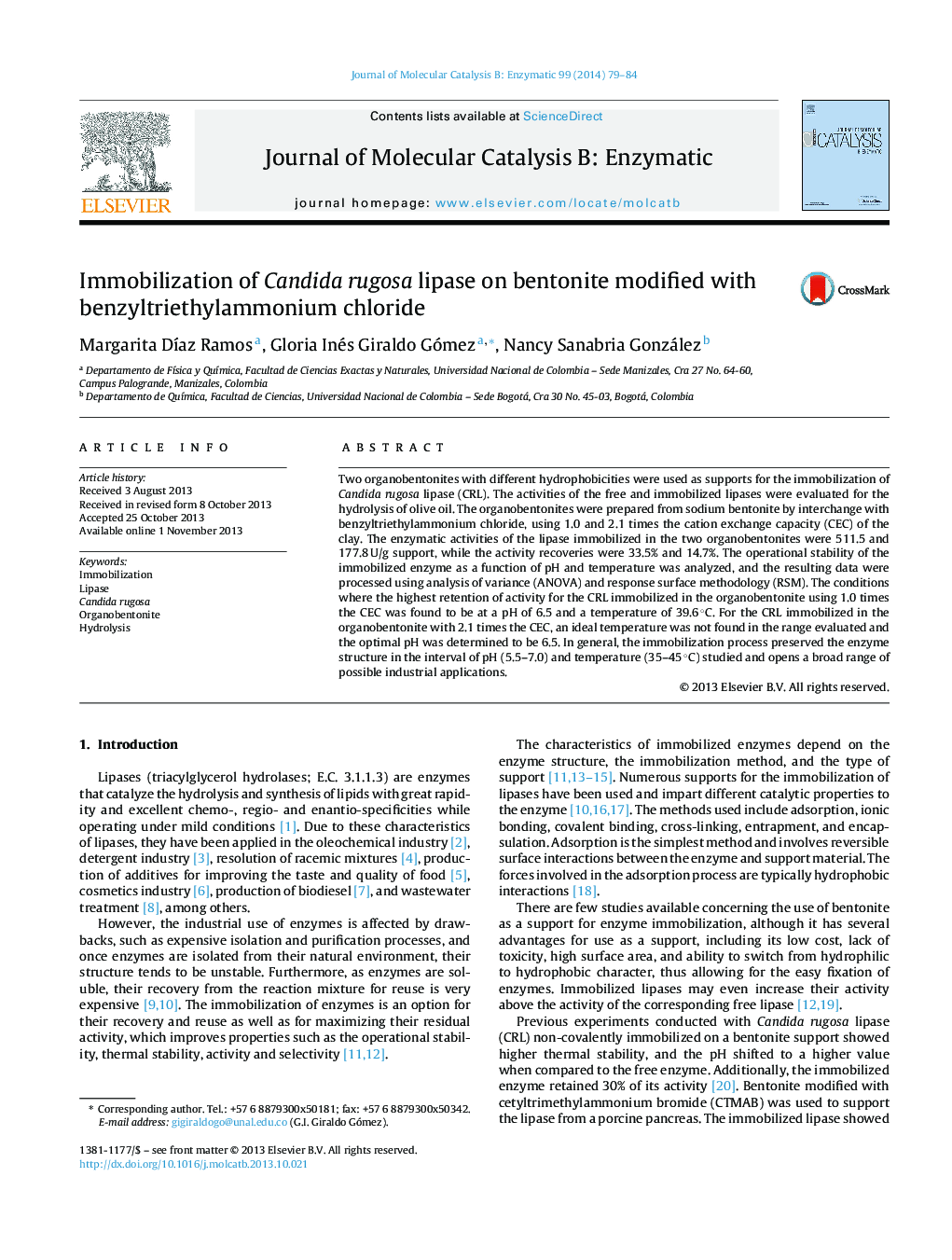| کد مقاله | کد نشریه | سال انتشار | مقاله انگلیسی | نسخه تمام متن |
|---|---|---|---|---|
| 69744 | 48790 | 2014 | 6 صفحه PDF | دانلود رایگان |

• Candida rugosa lipase was immobilized on an organobentonite.
• Organobentonite is a satisfactory support for the immobilization of enzymes.
• Arrangement of cations in the interlayer space of bentonites influences lipase activity.
• The immobilized lipase showed excellent operational stabilities at pH 6.5 and 39.6 °C.
• Immobilization of lipases in organobentonites preserves the structure of the enzyme.
Two organobentonites with different hydrophobicities were used as supports for the immobilization of Candida rugosa lipase (CRL). The activities of the free and immobilized lipases were evaluated for the hydrolysis of olive oil. The organobentonites were prepared from sodium bentonite by interchange with benzyltriethylammonium chloride, using 1.0 and 2.1 times the cation exchange capacity (CEC) of the clay. The enzymatic activities of the lipase immobilized in the two organobentonites were 511.5 and 177.8 U/g support, while the activity recoveries were 33.5% and 14.7%. The operational stability of the immobilized enzyme as a function of pH and temperature was analyzed, and the resulting data were processed using analysis of variance (ANOVA) and response surface methodology (RSM). The conditions where the highest retention of activity for the CRL immobilized in the organobentonite using 1.0 times the CEC was found to be at a pH of 6.5 and a temperature of 39.6 °C. For the CRL immobilized in the organobentonite with 2.1 times the CEC, an ideal temperature was not found in the range evaluated and the optimal pH was determined to be 6.5. In general, the immobilization process preserved the enzyme structure in the interval of pH (5.5–7.0) and temperature (35–45 °C) studied and opens a broad range of possible industrial applications.
Figure optionsDownload as PowerPoint slide
Journal: Journal of Molecular Catalysis B: Enzymatic - Volume 99, January 2014, Pages 79–84